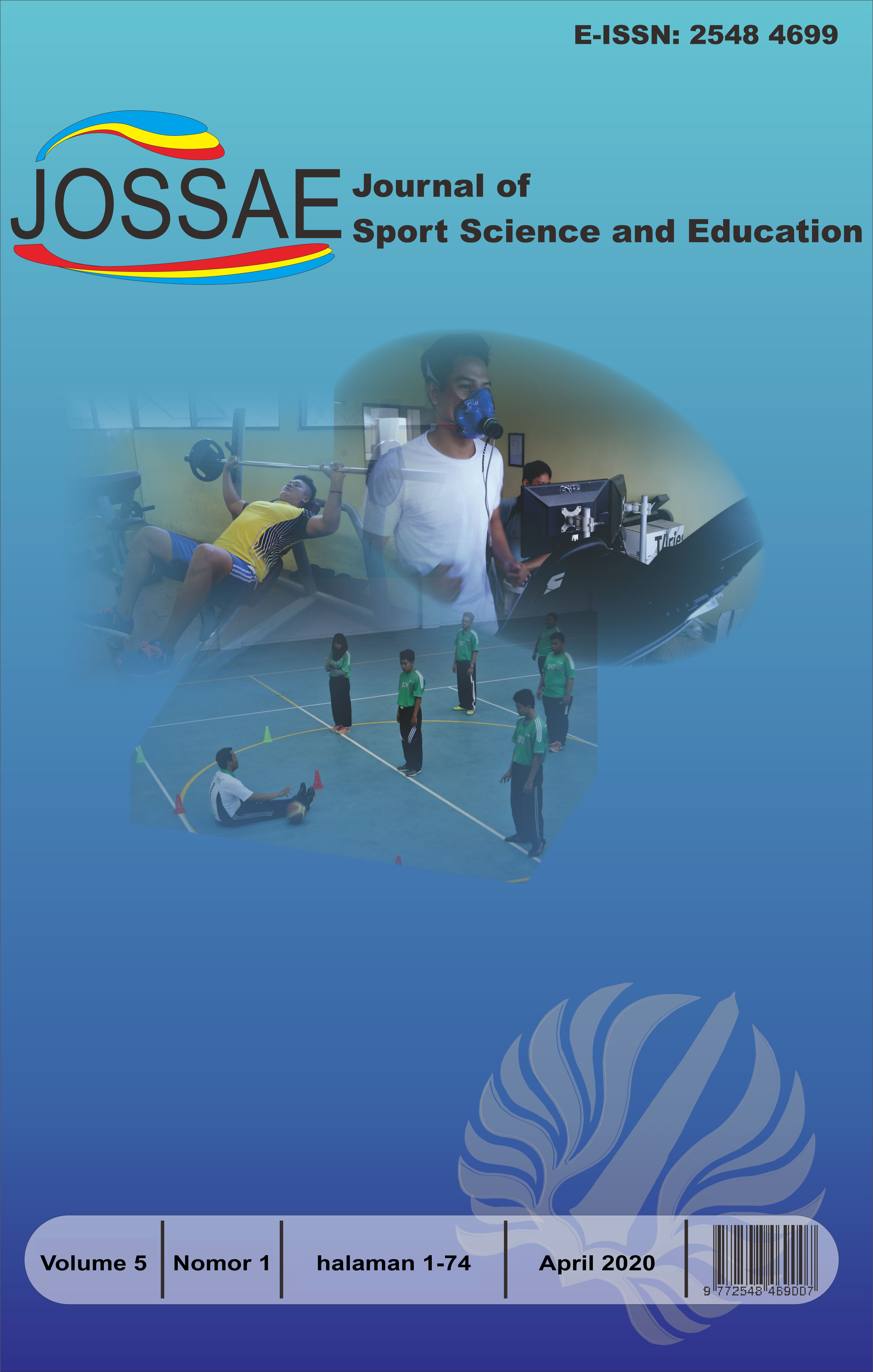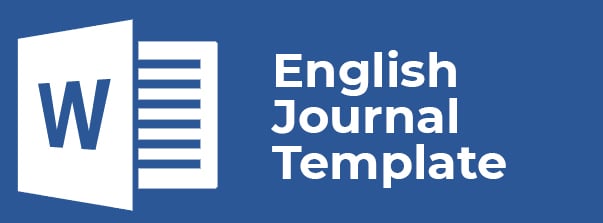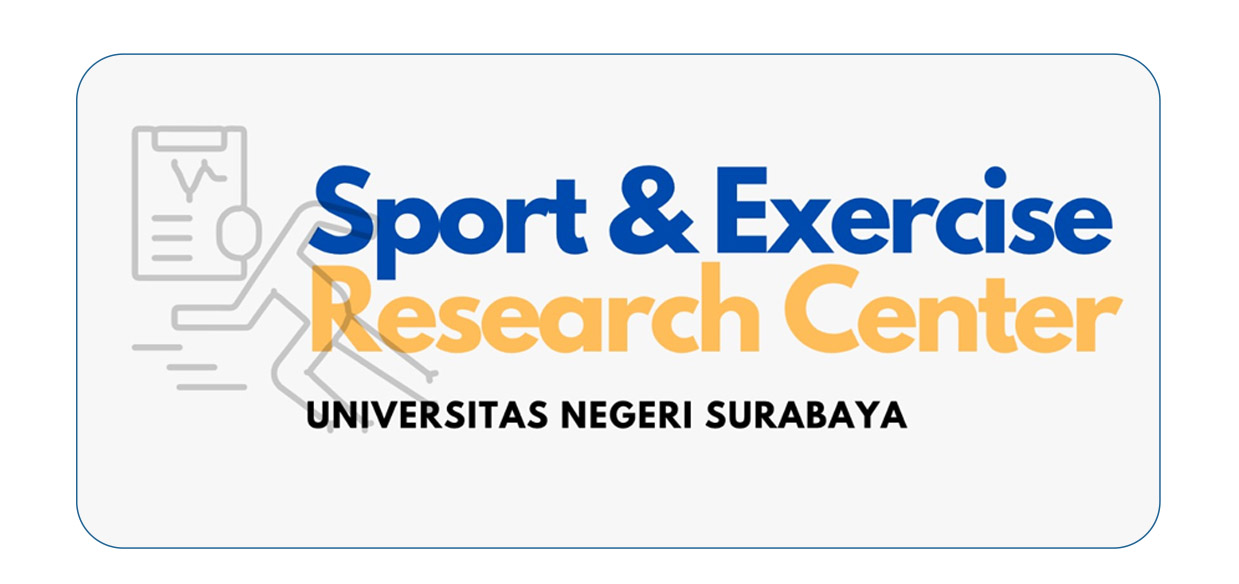Mekanisme Vitamin C Menurunkan Stres Oksidatif Setelah Aktivitas Fisik
DOI:
https://doi.org/10.26740/jossae.v5n1.p57-63Keywords:
vitamin c, antioxidants, oxidative stress, exerciseAbstract
The writing of this article aims to find out how the mechanism of vitamin C in reducing oxidative stress after physical activity. The method used is a systematic literature review. The result showed that vitamin C can inhibit oxidative stress after physical activity. Vitamin C is a water-soluble substance and it acts as chainbreaking antioxidant. It scavenges free radicals and reactive oxygen species (ROS), which are produced during metabolic process. Exercise can produce an imbalance between ROS and antioxidants, which leads to tissue damage related to oxidative stress. Vitamin C also acts as a supporting factor in several enzymatic reactions in the body and can increase components of the immune system. Because of the pivotal role of vitamin C in reducing free radical levels, this review article presents a characteristics and functions of vitamin C as an antioxidant to lessen the levels of free radicals which focused in exercise condition. It can be concluded that supplementation of vitamin c after physical activity can inhibit oxidative stress.References
Algul, S., Ugras, S., & Kara, M. (2018). Comparative evaluation of MDA levels during aerobic exercise in young trained and sedentary male subjects. 23(2), 98101. https://doi.org/10.5505/ejm.2018.40469
Ammar, A., Trabelsi, K., Boukhris, O., Glenn, J. M., Bott, N., Masmoudi, L., Hakim, A., Chtourou, H., Driss, T., Hoekelmann, A., & Abed, K. El. (2020). Effects of aerobic-, anaerobic- and combined-based exercises on plasma oxidative stress biomarkers in healthy untrained young adults. International Journal of Environmental Research and Public Health, 17(7).
https://doi.org/10.3390/ijerph17072601
Aritanoga, M., Effendi, C., & Herawati, L. (2019). Kopi Arabika-Gayo Menurunkan MDA dan Meningkatkan SOD setelah Latihan Fisik Akut Submaksimal pada Pria Sedenter Gayo-Arabica Coffee
Decreases MDA and Increases SOD after Single Bout Submaximal Physical Exercise in Sedentary Men. 5(2), 5863.
Arsana, I. N. (2016). Ekstrak Kulit Buah Manggis ( Garcinia mangostana L .) Memperbaiki Fungsi Hati Selama Aktifitas Fisik. Biologi FMIPA Universitas Hindu Indonesia,11, 103111.
Berawi, K. N., & Agverianti, T. (2017). Efek Aktivitas Fisik pada Proses Pembentukan Radikal Bebas sebagai Faktor Risiko Aterosklerosis. Jurnal Majority, 6(2), 8691.
http://juke.kedokteran.unila.ac.id/index.php/majority/article/view/1019
Caritá, A. C., Fonseca-Santos, B., Shultz, J. D., Michniak-Kohn, B., Chorilli, M., & Leonardi, G. R. (2020). Vitamin C: One compound, several uses. Advances for delivery, efficiency and stability.
Nanomedicine: Nanotechnology, Biology, and Medicine, 24(xxxx), 102117.
https://doi.org/10.1016/j.nano.2019.102117
El Abed, K., Ammar, A., Boukhris, O., Trabelsi, K., Masmoudi, L., Bailey, S. J., Hakim, A., & Bragazzi, N. L. (2019). Independent and Combined Effects of All-Out Sprint and LowIntensity Continuous Exercise on Plasma Oxidative Stress Biomarkers in Trained Judokas. Frontiers in Physiology, 10(July), 110. https://doi.org/10.3389/fphys.2019.00842
Elsayed, A., & Azab, A. E. (2019). Oxidative stress and antioxidant mechanisms in human body Toxicological effects of Propoxur View project Anti-dyslipidemic and Antiatherogenic Effects of Some Natural Products View project. Article in Journal of Biotechnology, 6(I2019), 4347.
https://doi.org/10.15406/jabb.2019.06.00173
He, F., Li, J., Liu, Z., Chuang, C. C., Yang, W., & Zuo, L. (2016). Redox mechanism of reactive oxygen species in exercise. Frontiers in Physiology, 7(NOV), 110. https://doi.org/10.3389/fphys.2016.00486
Ilyas, E. I. I., Utami, T. P., Siagian, M., Santoso, D. I. S., Prijanti, A. R., Indonesia, U., Indonesia, U., & Indonesia, U. (2017). Effects Of Moderate-Intensity Exercise Training On Stress Oxidative Marker : Malondialdehyde And Superoxide Dismutase Activity In Abdominal Aorta.
International Journal of Research - GRANTHAALAYAH, 99105.
https://doi.org/10.5281/zenodo.1133607
Jiao, Y., Wang, Y., Guo, S., & Wang, G. (2017). Glutathione peroxidases as oncotargets. Oncotarget, 8(45), 8009380102. https://doi.org/10.18632/oncotarget.20278
Margaritelis, N. V., Paschalis, V., Theodorou, A. A., Kyparos, A., & Nikolaidis, M. G. (2020). Redox
basis of exercise physiology. Redox Biology, January, 101499.
https://doi.org/10.1016/j.redox.2020.101499
Parwata, M. O. A. (2016). Bahan Ajar Antioksidan. Kimia Terapan, Pascasarjana, Universitas Udayana, Bali, April, 154.
Popovic, L. M., Mitic, N. R., Miric, D., Bisevac, B., Miric, M., & Popovic, B. (2015). Influence of vitamin c supplementation on oxidative stress and neutrophil inflammatory response in acute
and regular exercise. Oxidative Medicine and Cellular Longevity, 2015. https://doi.org/10.1155/2015/295497
Rastegar Moghaddam Mansouri, M., Abbasian, S., & Khazaie, M. (2018). Melatonin and Exercise: Their Effects on Malondialdehyde and Lipid Peroxidation. Melatonin - Molecular Biology, Clinical
and Pharmaceutical Approaches. https://doi.org/10.5772/intechopen.79561
Rusiani, E., Junaidi, S., Subiyono, H. S., & Sumartiningsih, S. (2020). Suplementasi Vitamin C dan E untuk Menurunkan Stres Oksidatif Setelah Melakukan Aktivitas Fisik Maksimal. Media Ilmu
Keolahragaan Indonesia, 9(2). https://doi.org/10.15294/miki.v9i2.23582
Shete, A. N. (2015). The Effect of Vitamin C on Serum Superoxide Dismutase and Blood Sugar Levels in the Patients of Type 2 Diabetes Mellitus International Journal of Health Sciences and Research . May
Simioni, C., Zauli, G., Martelli, A. M., Vitale, M., Sacchetti, G., Gonelli, A., & Neri, L. M. (2018).
Oxidative stress: Role of physical exercise and antioxidant nutraceuticals in adulthood and
aging. Oncotarget, 9(24), 1718117198. https://doi.org/10.18632/oncotarget.24729
Sunil Kumar, B. V., Singh, S., & Verma, R. (2017). Anticancer potential of dietary vitamin D and ascorbic acid: A review. Critical Reviews in Food Science and Nutrition, 57(12), 26232635.
https://doi.org/10.1080/10408398.2015.1064086
Sylviana, N., Gunawan, H., Lesmana, R., Purba, A., & Akbar, I. B. (2017). The Effect of Astaxanthin and Regular Training on Dynamic Pattern of Oxidative Stress on Male under Strenuous Exercise. Indonesian Journal of Clinical Pharmacy, 6(1), 4654.
https://doi.org/10.15416/ijcp.2017.6.1.46
Yi, X., Tang, D., Cao, S., Li, T., Gao, H., Ma, T., Yao, T., Li, J., & Chang, B. (2020). Effect of Different Exercise Loads on Testicular Oxidative Stress and Reproductive Function in Obese Male Mice. Oxidative Medicine and Cellular Longevity, 2020.
https://doi.org/10.1155/2020/3071658
Yimcharoen, M., Kittikunnathum, S., Suknikorn, C., Nak-On, W., Yeethong, P., Anthony, T. G., & Bunpo, P. (2019). Effects of ascorbic acid supplementation on oxidative stress markers in
healthy women following a single bout of exercise. Journal of the International Society of Sports Nutrition, 16(1), 19.https://doi.org/10.1186/s12970-019-0269-8
Ziaadini, F., Aminae, M., Mahsa Rastegar, M. M., Abbasian, S., & Memari, A. H. (2017). Melatonin Supplementation Decreases Aerobic Exercise Training Induced-Lipid Peroxidation and Malondialdehyde in Sedentary Young Women. Polish Journal of Food and Nutrition Sciences, 67(3), 225232. https://doi.org/10.1515/pjfns-2017-0001
Ammar, A., Trabelsi, K., Boukhris, O., Glenn, J. M., Bott, N., Masmoudi, L., Hakim, A., Chtourou, H., Driss, T., Hoekelmann, A., & Abed, K. El. (2020). Effects of aerobic-, anaerobic- and combined-based exercises on plasma oxidative stress biomarkers in healthy untrained young adults. International Journal of Environmental Research and Public Health, 17(7).
https://doi.org/10.3390/ijerph17072601
Aritanoga, M., Effendi, C., & Herawati, L. (2019). Kopi Arabika-Gayo Menurunkan MDA dan Meningkatkan SOD setelah Latihan Fisik Akut Submaksimal pada Pria Sedenter Gayo-Arabica Coffee
Decreases MDA and Increases SOD after Single Bout Submaximal Physical Exercise in Sedentary Men. 5(2), 5863.
Arsana, I. N. (2016). Ekstrak Kulit Buah Manggis ( Garcinia mangostana L .) Memperbaiki Fungsi Hati Selama Aktifitas Fisik. Biologi FMIPA Universitas Hindu Indonesia,11, 103111.
Berawi, K. N., & Agverianti, T. (2017). Efek Aktivitas Fisik pada Proses Pembentukan Radikal Bebas sebagai Faktor Risiko Aterosklerosis. Jurnal Majority, 6(2), 8691.
http://juke.kedokteran.unila.ac.id/index.php/majority/article/view/1019
Caritá, A. C., Fonseca-Santos, B., Shultz, J. D., Michniak-Kohn, B., Chorilli, M., & Leonardi, G. R. (2020). Vitamin C: One compound, several uses. Advances for delivery, efficiency and stability.
Nanomedicine: Nanotechnology, Biology, and Medicine, 24(xxxx), 102117.
https://doi.org/10.1016/j.nano.2019.102117
El Abed, K., Ammar, A., Boukhris, O., Trabelsi, K., Masmoudi, L., Bailey, S. J., Hakim, A., & Bragazzi, N. L. (2019). Independent and Combined Effects of All-Out Sprint and LowIntensity Continuous Exercise on Plasma Oxidative Stress Biomarkers in Trained Judokas. Frontiers in Physiology, 10(July), 110. https://doi.org/10.3389/fphys.2019.00842
Elsayed, A., & Azab, A. E. (2019). Oxidative stress and antioxidant mechanisms in human body Toxicological effects of Propoxur View project Anti-dyslipidemic and Antiatherogenic Effects of Some Natural Products View project. Article in Journal of Biotechnology, 6(I2019), 4347.
https://doi.org/10.15406/jabb.2019.06.00173
He, F., Li, J., Liu, Z., Chuang, C. C., Yang, W., & Zuo, L. (2016). Redox mechanism of reactive oxygen species in exercise. Frontiers in Physiology, 7(NOV), 110. https://doi.org/10.3389/fphys.2016.00486
Ilyas, E. I. I., Utami, T. P., Siagian, M., Santoso, D. I. S., Prijanti, A. R., Indonesia, U., Indonesia, U., & Indonesia, U. (2017). Effects Of Moderate-Intensity Exercise Training On Stress Oxidative Marker : Malondialdehyde And Superoxide Dismutase Activity In Abdominal Aorta.
International Journal of Research - GRANTHAALAYAH, 99105.
https://doi.org/10.5281/zenodo.1133607
Jiao, Y., Wang, Y., Guo, S., & Wang, G. (2017). Glutathione peroxidases as oncotargets. Oncotarget, 8(45), 8009380102. https://doi.org/10.18632/oncotarget.20278
Margaritelis, N. V., Paschalis, V., Theodorou, A. A., Kyparos, A., & Nikolaidis, M. G. (2020). Redox
basis of exercise physiology. Redox Biology, January, 101499.
https://doi.org/10.1016/j.redox.2020.101499
Parwata, M. O. A. (2016). Bahan Ajar Antioksidan. Kimia Terapan, Pascasarjana, Universitas Udayana, Bali, April, 154.
Popovic, L. M., Mitic, N. R., Miric, D., Bisevac, B., Miric, M., & Popovic, B. (2015). Influence of vitamin c supplementation on oxidative stress and neutrophil inflammatory response in acute
and regular exercise. Oxidative Medicine and Cellular Longevity, 2015. https://doi.org/10.1155/2015/295497
Rastegar Moghaddam Mansouri, M., Abbasian, S., & Khazaie, M. (2018). Melatonin and Exercise: Their Effects on Malondialdehyde and Lipid Peroxidation. Melatonin - Molecular Biology, Clinical
and Pharmaceutical Approaches. https://doi.org/10.5772/intechopen.79561
Rusiani, E., Junaidi, S., Subiyono, H. S., & Sumartiningsih, S. (2020). Suplementasi Vitamin C dan E untuk Menurunkan Stres Oksidatif Setelah Melakukan Aktivitas Fisik Maksimal. Media Ilmu
Keolahragaan Indonesia, 9(2). https://doi.org/10.15294/miki.v9i2.23582
Shete, A. N. (2015). The Effect of Vitamin C on Serum Superoxide Dismutase and Blood Sugar Levels in the Patients of Type 2 Diabetes Mellitus International Journal of Health Sciences and Research . May
Simioni, C., Zauli, G., Martelli, A. M., Vitale, M., Sacchetti, G., Gonelli, A., & Neri, L. M. (2018).
Oxidative stress: Role of physical exercise and antioxidant nutraceuticals in adulthood and
aging. Oncotarget, 9(24), 1718117198. https://doi.org/10.18632/oncotarget.24729
Sunil Kumar, B. V., Singh, S., & Verma, R. (2017). Anticancer potential of dietary vitamin D and ascorbic acid: A review. Critical Reviews in Food Science and Nutrition, 57(12), 26232635.
https://doi.org/10.1080/10408398.2015.1064086
Sylviana, N., Gunawan, H., Lesmana, R., Purba, A., & Akbar, I. B. (2017). The Effect of Astaxanthin and Regular Training on Dynamic Pattern of Oxidative Stress on Male under Strenuous Exercise. Indonesian Journal of Clinical Pharmacy, 6(1), 4654.
https://doi.org/10.15416/ijcp.2017.6.1.46
Yi, X., Tang, D., Cao, S., Li, T., Gao, H., Ma, T., Yao, T., Li, J., & Chang, B. (2020). Effect of Different Exercise Loads on Testicular Oxidative Stress and Reproductive Function in Obese Male Mice. Oxidative Medicine and Cellular Longevity, 2020.
https://doi.org/10.1155/2020/3071658
Yimcharoen, M., Kittikunnathum, S., Suknikorn, C., Nak-On, W., Yeethong, P., Anthony, T. G., & Bunpo, P. (2019). Effects of ascorbic acid supplementation on oxidative stress markers in
healthy women following a single bout of exercise. Journal of the International Society of Sports Nutrition, 16(1), 19.https://doi.org/10.1186/s12970-019-0269-8
Ziaadini, F., Aminae, M., Mahsa Rastegar, M. M., Abbasian, S., & Memari, A. H. (2017). Melatonin Supplementation Decreases Aerobic Exercise Training Induced-Lipid Peroxidation and Malondialdehyde in Sedentary Young Women. Polish Journal of Food and Nutrition Sciences, 67(3), 225232. https://doi.org/10.1515/pjfns-2017-0001
Downloads
Published
2020-05-28
How to Cite
Wibawa, J. C., Wati, L. H., & Arifin, M. Z. (2020). Mekanisme Vitamin C Menurunkan Stres Oksidatif Setelah Aktivitas Fisik. JOSSAE (Journal of Sport Science and Education), 5(1), 57–63. https://doi.org/10.26740/jossae.v5n1.p57-63
Issue
Section
Articles
 Abstract views: 3253
,
Abstract views: 3253
, PDF Downloads: 25645
PDF Downloads: 25645









